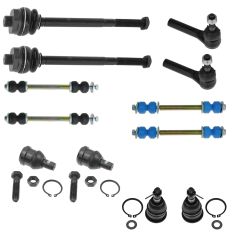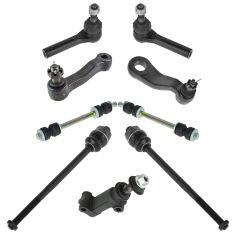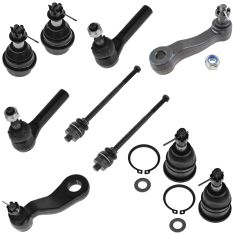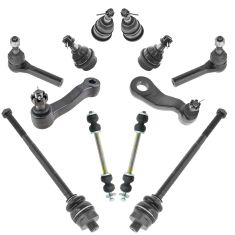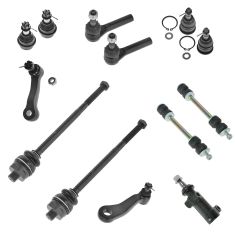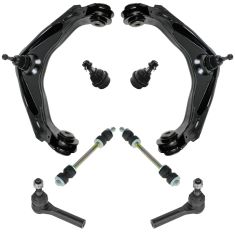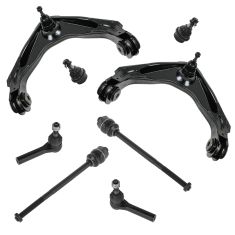1ASFK02480-Chevrolet GMC Hummer Front 8 Piece Steering & Suspension Kit TRQ PSA58912

Replaces
2006 Chevrolet Suburban 2500 Front 8 Piece Steering & Suspension Kit TRQ PSA58912

You may also like
Product Reviews
Loading reviews
5.00/ 5.0
2
2 reviews
Items
July 19, 2017
Thanks for asking. I need to return the package. Reason the ball joints don't have the grease fitting. If you have those please let me know. Thanks and be blessed
Perfect fit
July 26, 2018
Everything installed pretty easy. Perfect fit no issues so far
Customer Q&A
are these greasable, phots seem to be sealed?
September 30, 2016
10
pregreased and sealed
October 4, 2016
Brian F
do these come with grease fittings?
July 9, 2024
10
Thank you for your inquiry!
Product Features
Application Specific Design: No modifications necessary
Anti-Corrosion Coated: Enhanced surface life
Pre-greased: No additional maintenance required
Kitted for Restored Performance: Improved road-feel and handling
Install Tip: When replacing steering components, have a professional alignment performed afterwards. This ensures proper tracking and even tire wear.
July 9, 2024
Jean O
Chevrolet is a registered trademark of General Motors Company. 1A Auto is not affiliated with or sponsored by Chevrolet or General Motors Company.
See all trademarks.














